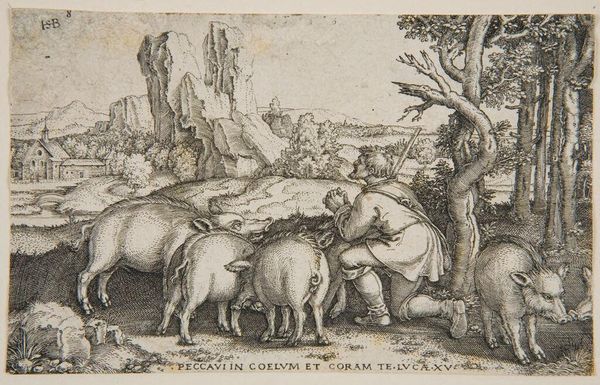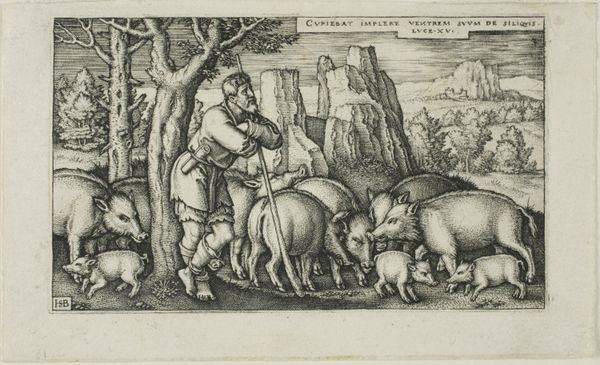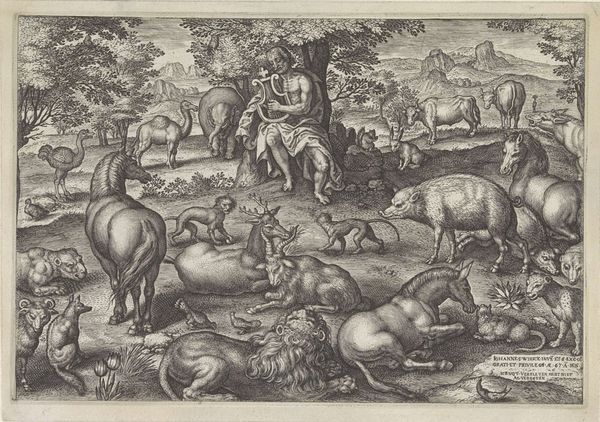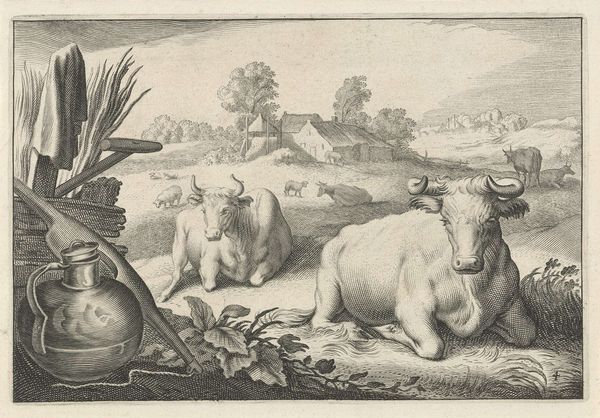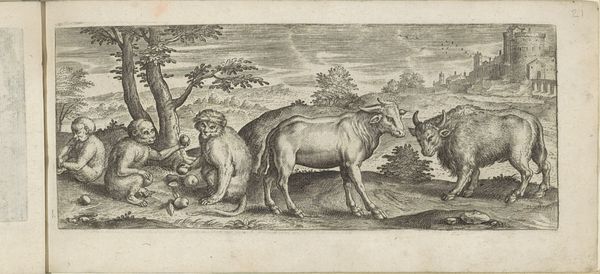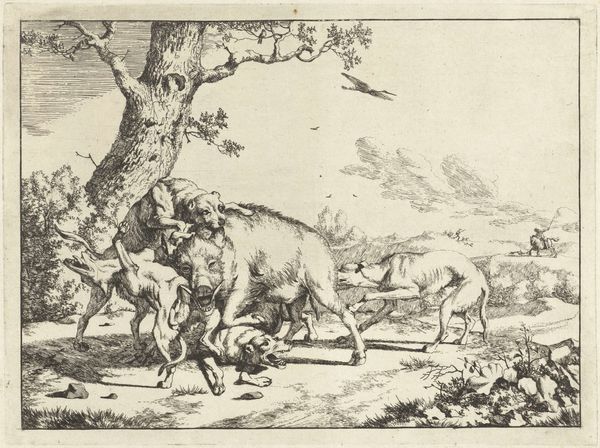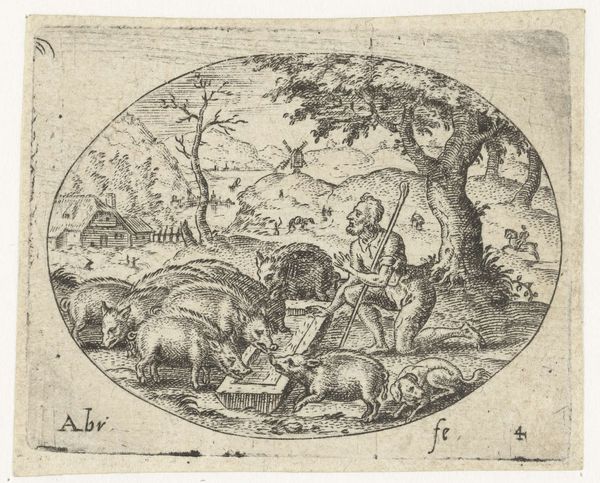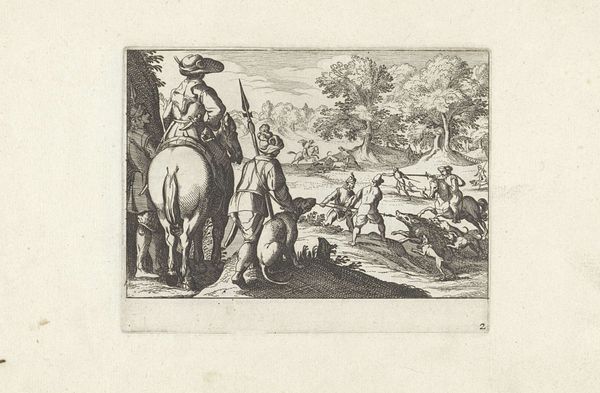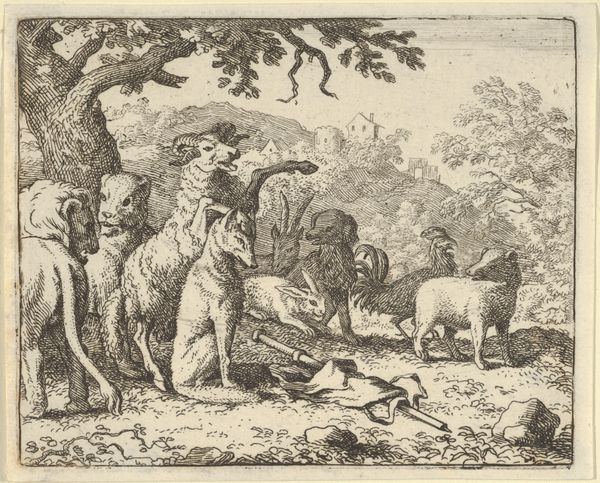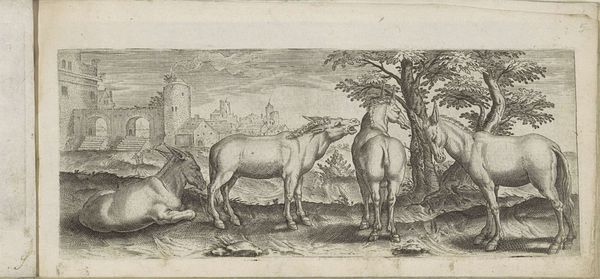
print, engraving
# print
#
pen sketch
#
landscape
#
figuration
#
genre-painting
#
northern-renaissance
#
engraving
Dimensions: height 72 mm, width 115 mm
Copyright: Rijks Museum: Open Domain
Editor: Here we have Sebald Beham's "Verloren zoon als varkenshoeder" – or, "The Prodigal Son as Swineherd" – an engraving from 1538. I’m struck by the detail he achieves in such a small format, especially the contrast between the delicate background landscape and the, shall we say, earthier depiction of the pigs and the son’s plight. What draws your eye in this piece? Curator: Beyond the impressive technical skill, I find the socio-political context fascinating. Consider that Beham was a printmaker in Reformation-era Germany. Images like this weren’t just artistic expressions, they were powerful tools for disseminating religious and social commentary. This image serves to both promote protestant ideals but it is also designed for commercial interests. How do you imagine its display and circulation at the time? Editor: Hmm, I guess I hadn’t thought about it in terms of religious messaging. I suppose it could be a subtle reminder of humility, that even those who stray can find redemption. Curator: Precisely. And prints like this would have been relatively accessible to a wider audience than, say, a large-scale altarpiece. Think about its function in homes, schools, and public spaces. The prodigal son story becomes a readily available emblem of moral conduct, reinforced by the artist's choice of medium. Is it a landscape for devotion, or is the story there just for display? Editor: That really shifts my perspective. So, it’s less about individual piety and more about how art functions as a vehicle for cultural norms and beliefs. Curator: Exactly! These images, mass-produced, help to shape a collective understanding of virtue and sin. So thinking about its scale and what can be consumed affordably we have something quite fascinating. Editor: Wow, I had missed all of that. Now I'm seeing how even a seemingly simple scene carries a complex network of historical meaning. Thank you, Curator! Curator: My pleasure, Editor. It's through considering those historical dynamics, that we fully start to appreciate these works and the societies they reflect.
Comments
No comments
Be the first to comment and join the conversation on the ultimate creative platform.
